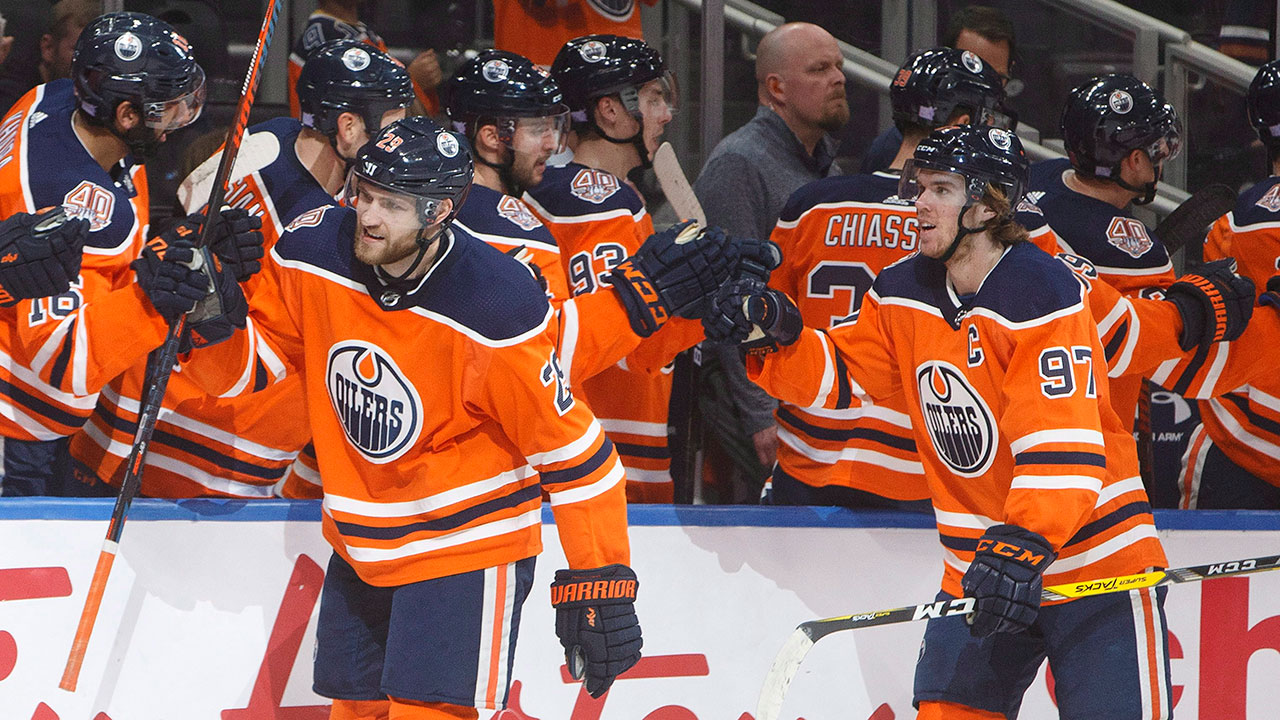
“The game is changing.”
It has become hockey’s newest cliché — hopefully replacing the need to “get pucks deep,” or declare that the NHL “is a 3-2 league now.”
As more and more coaches stack their No. 1 unit and eschew the traditional, depth-based strategies of building lines in the National Hockey League, one coach recently uttered this heresy:
“Look at how they do it in the NBA. You get your three best guys, and you figure out the rest.”
Now, the fact that this coach preferred not to have his name on that quote also tells us something. On one hand, there are some obvious holes in that theory. Like, hockey isn’t basketball. The top players don’t play 40-plus minutes a night.
On the other, as the game changes and player fitness levels continue to rise, perhaps that 20-man team concept that has defined hockey for so many years is becoming antiquated as well. With TV time outs and shorter shifts for the other lines, maybe your best forwards can all play 25 minutes now.
Sportsnet NOW gives you access to over 500 NHL games this season, blackout-free, including Hockey Night in Canada, Rogers Hometown Hockey, Scotiabank Wednesday Night Hockey, the entire 2019 Stanley Cup Playoffs and more.
“It’s a general statement,” begins Colorado head coach Jared Bednar, “but you live and die … with your stars. They have to carry your team and be your best players ever night.
“Then hopefully you can get your secondary pieces, lines two through four, playing roles for you.”
Bednar’s top line of Nathan MacKinnon between Mikko Rantanen and Gabriel Landeskog not only comprise the Avs’ top three in scoring, but they all lie inside the NHL’s top 25. It’s the hottest line in hockey.
In Boston, Patrice Bergeron between Brad Marchand and David Pastrnak is an example of a team playing its top three forwards on Line 1, give or take a second-line centre like David Krejci.
The ongoing discussion in Edmonton revolves around Connor McDavid playing with or without Leon Draisaitl, and the coaching staff there has mused about putting Ryan Nugent-Hopkins up on left wing with the duo to form their own “super line.”
In Calgary we’d argue Matt Tkachuk is a top-three Flames forward, but head coach Bill Peters keeps Elias Lindholm up on his power unit with Sean Monahan and Johnny Gaudreau.
Are the new “super lines” the way of the future?
“It looks like it,” Peters said this week. “Teams are having unreal success with it — Boston, Colorado. You watch those kids play, and it makes sense. It makes it easier, as a coach, to get those people consistent ice time.
“And the ice time is the issue right now, as I talk to other coaches around the league. If you’re playing your first line 20, 21 minutes, then what’s left for everyone else?” Peters asked. “With us, some of our top line guys don’t kill penalties. So to get them their 21 minutes, you’ve got to make sure you’re using them coming out of TV timeouts and to start periods.”
As of Friday there were five forwards who are averaging over 22:15 of ice time per game. Flash back to 1997-98 when they first started tracking ice time, and there were 15. A decade after that, in 2007-08, only six forwards played that much.
Last season, no forward played more than Anze Kopitar’s 22:05.
Skill sets are changing, and younger players are becoming more impactful today than they were before. Coaches will need to change their philosophies as well.
“Some of these young players who have come in are extreme in what they do,” said Paul Maurice. “Think of Connor McDavid’s speed, and MacKinnon’s (speed). There needs to be a certain speed and skill level to go with them to get the most out of your ‘A’ player.
“Connor McDavid does something really unusual in his game, and he needs certain types of players, maybe, to amplify that,” Maurice continued. “Finding the right complement is most important. If it happens to be your two other best players — and sometimes those two players become your second- and third-best player because they’re playing with such extreme speed.”
The Flames got two goals from Tkachuk in a 3-2 loss to Montreal Thursday, while their top line was silent, but for a power-play assist. Theoretically, with that depth scoring and a goal or two from the top line, that should add up to a Flames win.
When you ask McLellan about playing Nugent-Hopkins with McDavid and Draisaitl on his top line, he frets over whether his team has the depth to handle the other 35-40 minutes of the game.
“The only thing that is left is to have all three of them together,” McLellan said of his moves in Edmonton. “But you have to have — you have to have — in the other nine players, some players going well. You can’t put that much pressure on the top group.
“(On Tuesday against Montreal) we had 25 goals combined on our top line, before we played the game. We had nine goals, three and two on the other lines.”
So in Edmonton, if Milan Lucic can get going and Ryan Spooner enjoys his new home, it would give McLellan license to stock his No. 1 line with his three best forwards.
Connor McDavid between Ryan Nugent-Hopkins and Leon Draisaitl. That would qualify as a “super line” indeed.
“We would all like to load up your best three and really have a good team underneath it,” said Maurice, who has considerably more scoring depth in Winnipeg than most coaches. “But if you can’t, at some point in time, you have to make sure your best player has the tools to be that best player.”

Be the first to comment